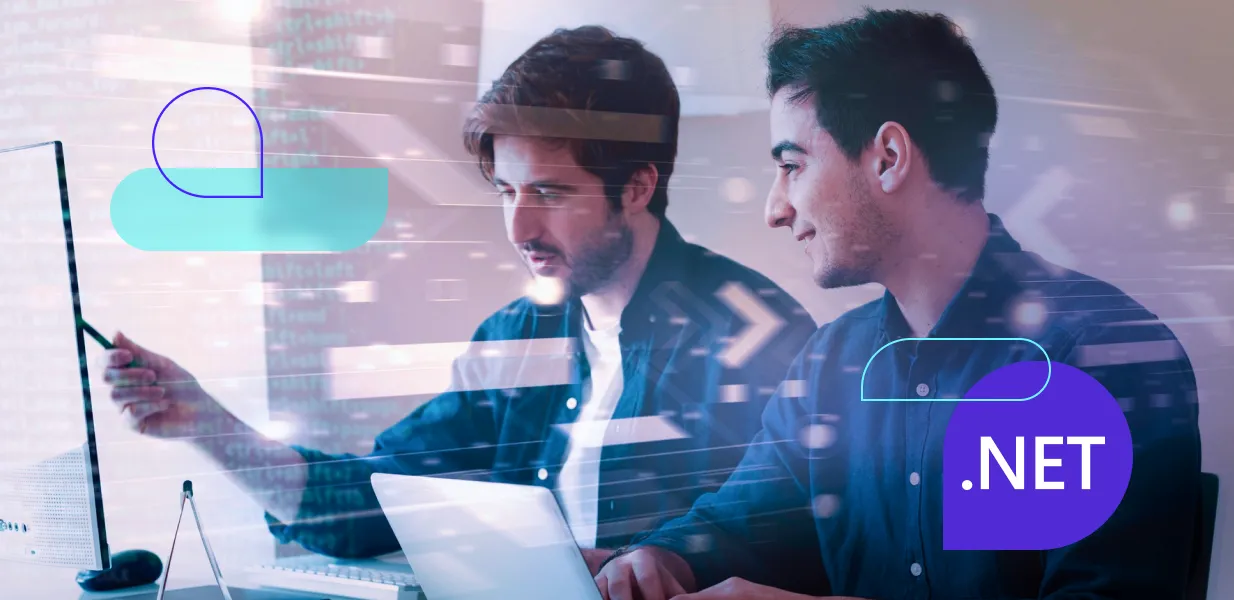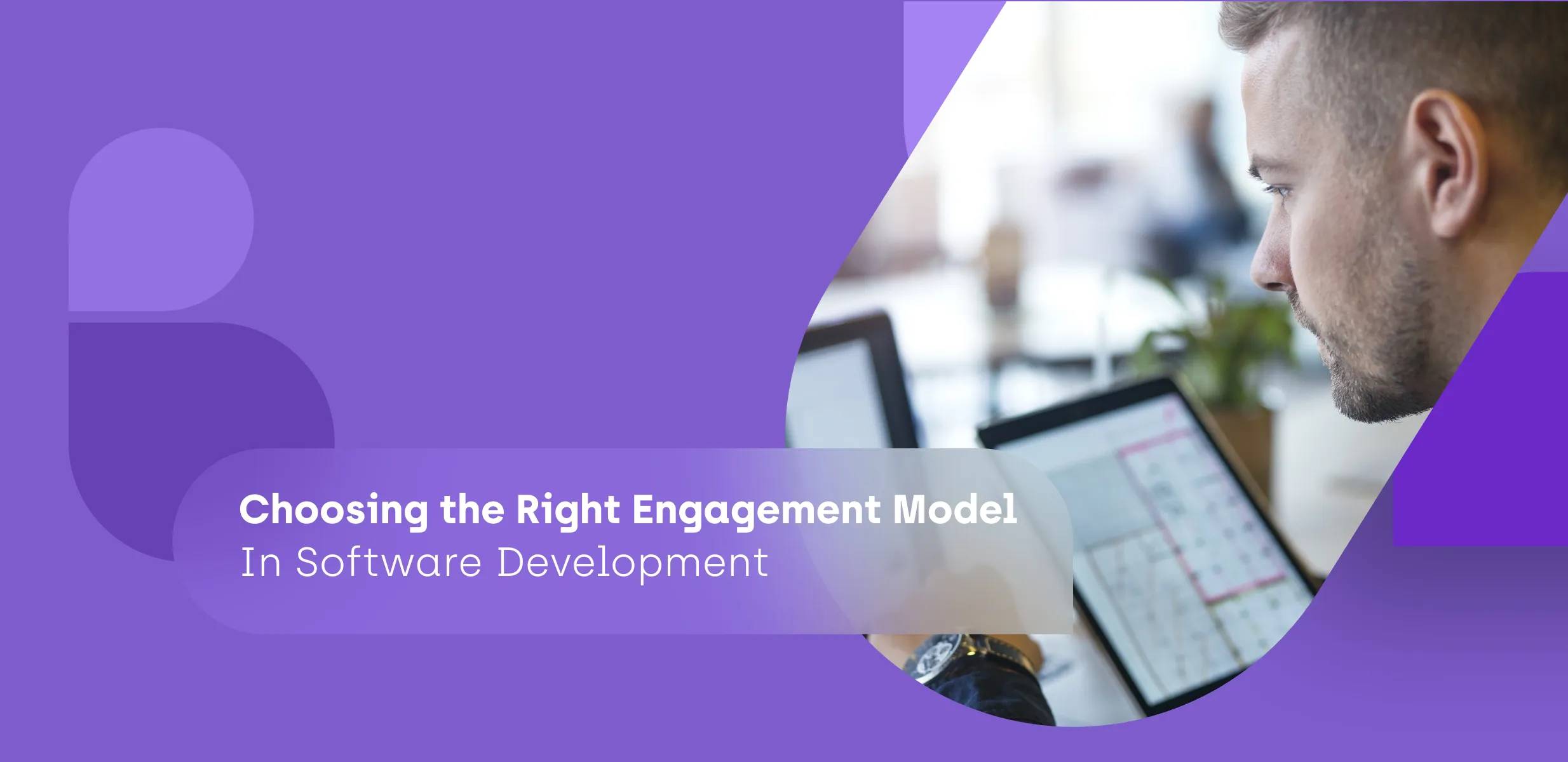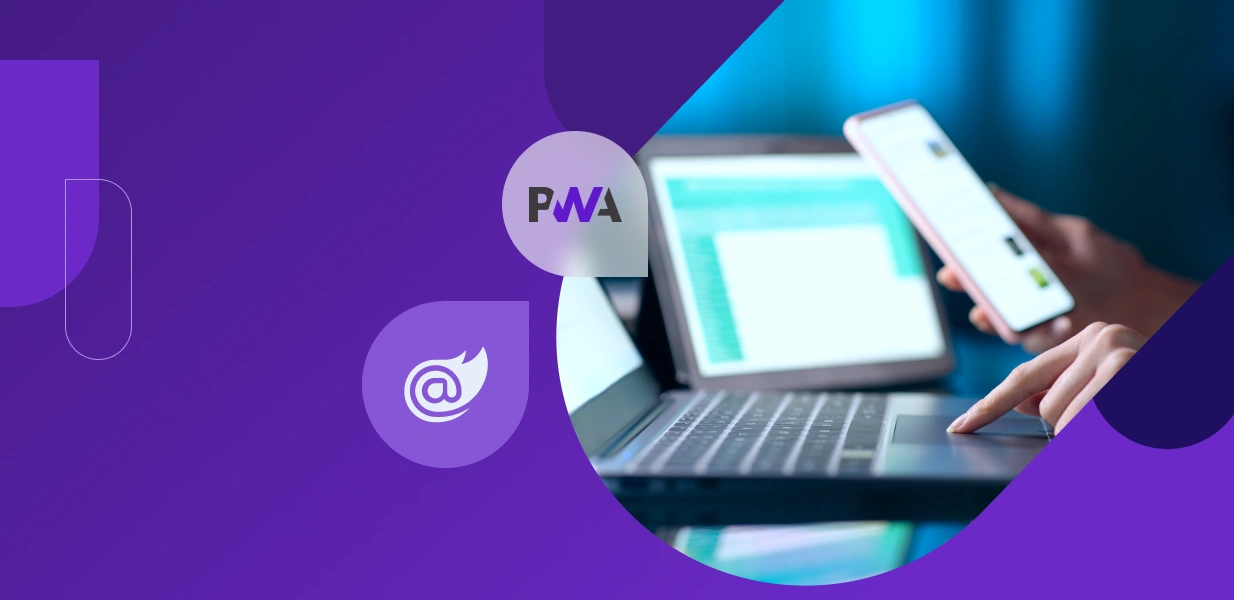
What engagement model is right for your software projects?

When looking for a software development company, businesses must consider their needs for the project - is a dedicated team required or only support? Are the project requirements fixed or do you expect them to change over the course of the project? Who will be responsible for which parts of the project and what are the commitments you expect them to take on?
All of these questions are part of working with a software development partner and specifying the exact rules under which you will do so. These questions form part of what is known as the engagement model for software development. It provides the framework for how you and the development company interact, what you expect from them, and under what circumstances they will perform work for you.
The software development engagement model is a key part of the success of a software project as it lays the foundation of its development and the resources, time, and manpower you will commit to this project. Choosing the right engagement model for your specific situation is therefore key!
Here we will explore different software development engagement models and how to pick the one that is right for you!
What is the software development engagement model?
An engagement model for software development is the frame that defines the relationship between an organization and a software development company.
It specifies the conditions and responsibilities agreed to and assumed by each party as well as the project’s size, the software concept, and the approach to the development process. It also includes an agreement on the cost of development and terms of payment, the duration of the project, and rules about addressing any issues that arise..
There is no one-size-fits-all software development engagement model. The right model is determined on the basis of a project’s details, client needs but also any limits, financial or otherwise, to the engagement.
Following are some of the most popular engagement models used in software development.
What are the different types of software development engagement models?
The engagement models below are among those that have gained industry-wide acceptance and are frequently used as reference points when entering into a conversation with a software vendor. While they do not exhaust the available options, they provide a foundation for further talks and negotiations.
The fixed-price model
Also known as a fixed-bid contract, this is one of the most common types of engagement models. Its name points to the main emphasis in the model - the price of the project is fixed, meaning that it has a well-defined scope, well-defined project deliverables, and a fixed timeline. Such a model may entail having a dedicated team working on the project.
Typically, once the conditions are agreed upon and the contract is signed, there is no changing its terms. In certain situations, if a change is necessary, a change management process may be initiated or an additional contract may be signed to accommodate the new requirements and adjust costs and duration accordingly.
This type of model provides clients with a high degree of certainty about what they can expect to receive and increases transparency regarding the progress of the project. It can also minimize errors during the development process, as long as error-free documentation is provided initially.
The time & material model
Also known as the T&M model, this type of engagement with the software vendor provides a great degree of flexibility in determining what they need and for how long.
Unlike the fixed-price model, here the requirements of the project are not strictly defined at the outset. Instead, pre-defined skill sets are what is requested by the client and the software development company provides a time-based rate for each IT resource. The client then gets to determine how, when, and for how long they will engage different IT specialists, based on how the project develops.
This model is particularly useful for projects that are continuously evolving and don’t have a set endpoint. Support and maintenance needs also fall under this model. It also works well for situations in which a company requires research and consulting in order to arrive at a better understanding of its needs and define the scope. Finally, large and complex projects where progress is gradual can also work with this model.
Offshore development center (ODC) model
The ODC model works on the basis of hiring specialists or a team that serves as an extension of the company’s in-house development team. People who are part of the offshore team can be located in different locations, all managed by the ODC as the vendor.
Typically, like in the T&M model, the ODC will provide developers with pre-identified and agreed-upon capabilities who work together with the in-house team on the tasks set by the client. This allows the client to allocate people to specific jobs and scale teams up and down, as needed, and on short notice.
Due to its flexibility, this makes the model cost-effective and can ensure greater coverage of work hours, as developers are spread out in different locations and time zones. For it to work, though, the client must have clearly defined needs and tasks, and delegate them effectively to the ODC.
IT staff augmentation model
The IT staff augmentation engagement model is close to the ODC, however, staff in this model joins the in-house team, rather than being based remotely. This model allows clients to flexibly augment the size of their in-house team by bringing in resources provided by an IT staff augmentation agency.
This type of arrangement works well for companies that experience seasonal increases and decreases in demand. It is also helpful for those whose QA and development tasks are aligned with in-house work, and who require in-person collaboration.
Service level agreement (SLA) model
Also known as the milestone-based model, an SLA engagement is a good idea when the client is looking to achieve specific milestones, defined over time. Unlike the fixed-price model, here clients are billed by vendors once a milestone is reached but the price is not pre-defined and depends on the time and work it took to reach the milestone. After that, the next milestone may be determined.
This agreement is useful for companies that have a good and trusting working relationship which reduces downtime and friction if any disputes arise.
Managed services model
The managed services engagement model involves a software vendor or technology partner managing the execution of the whole project, and any new requirements that arise in the process.
In other words, this is a hands-off approach to software development in which companies entirely delegate the process to a vendor who brings in a dedicated team, in order to focus on other aspects of the business, such as their core business functions.
This model is particularly good for companies that don’t have the necessary experience and expertise in leading a development project. However, in order to be successful, it requires a great degree of trust as well as very specific agreements.
This model involves the vendor making decisions about how to staff the teams for the project, and implementing processes and practices that are appropriate for the situation. It also includes them ensuring the project’s progress and that deadlines are kept, as well as maintaining documentation and providing the client with regular reports.
How to choose the right engagement model for software development?
To determine which engagement model would be appropriate, you must consider the different aspects of your project. These include:
Project scope, type, and timeline
How complex or simple is your project and what is it that you want to achieve? What stage is your project in - is it still an idea or already in development? Do you want a web app, an application, or something else, and how soon do you want the product to be delivered?
Budget
Do you have a fixed budget for your project or can you extend it flexibly, based on how the project develops?
Flexible or fixed
Do you have a strict set of requirements and goals or do you want to be able to make changes flexibly as the project develops? Do you require a dedicated team for the job or do you prefer to have people come and go, depending on need?
IT resources
What kind of skillset do you need and what kind of technology suite should be used for the project? Do you need to augment your team with more commonly available skills or do you require more specific and niche skills? Do you need these resources for a longer period of time, briefly, seasonally, or else?
Control and project management
Do you have the necessary expertise and capacity to manage product development or do you prefer to delegate control to the software development company?
All of these and adjacent questions will help you define precisely where you are located with regard to your project and what your software development needs are. On this basis, you can then proceed with selecting a software development engagement model that fits your requirements.
Each of the above engagement models serves as a reference point for determining the best kind of relationship and agreement to have with a vendor and is not set in stone. Instead, as long as you have found a reliable vendor, you can negotiate and define an agreement that is specific to your situation, without necessarily fitting it in a box.
Work with Resolute Software as your software development partner
With hundreds of successful projects, Resolute Software can help you determine the software development engagement model that is right for your needs. Our expertise spans the whole range of software solutions for small businesses up to big multinational organizations.
To learn more about how we can provide you with software development solutions and what can our engagement model offer you, get in touch, and let’s discuss your requirements!
FAQs
The software engagement model is the agreement that specifies the conditions of engagement between a client and a software development company. It includes the specific requirements of the project, its aims, deliverables, timeframe, the parties that will participate in the project and their responsibilities, project management, the budget of the project, and more. There are several engagement models in software that are used as the basis for negotiating development projects.
Some of the most popular engagement models in software include the fixed-price (or fixed-bid) model, the time and material model, the offshore development center model, the IT staff augmentation model, the service level agreement model, the managed services model, and various hybrid models that combine elements of the former.
Engagement refers to the form of the contractual relationship that is established between a client and a service vendor - such as a software development company. It includes all the conditions and requirements under which these parties engage, and their commitments to each other - such as deliverables, on the one hand, and payment - on the other.
Engagement models are determined on the basis of the needs of the software development project - the project scope, its timeframe, goals, and deliverables, the IT resources (both in terms of staff as well as technology stack), the budget, the degree to which a client wants to draw on resources in a flexible or fixed way, and more. All these elements form the basis of formulating the most suitable engagement model between client and vendor.





